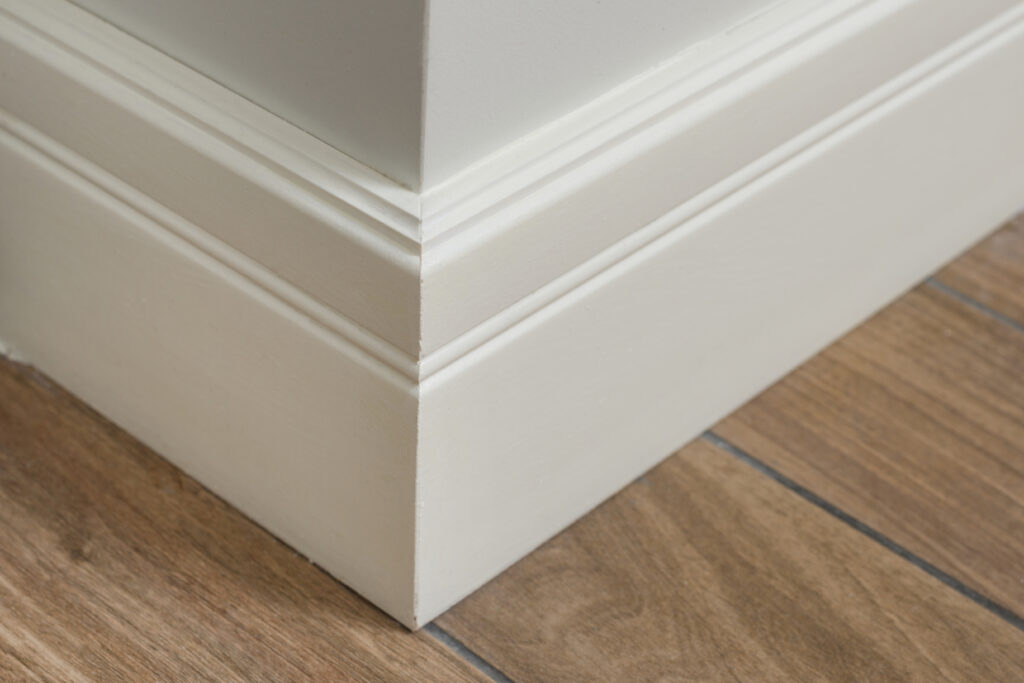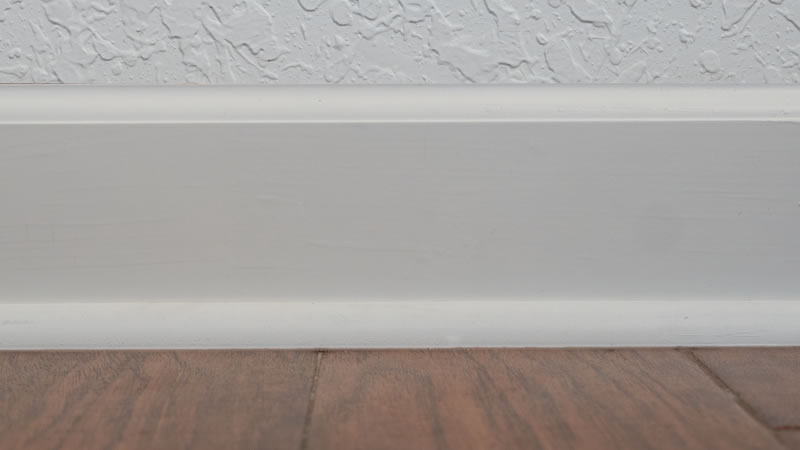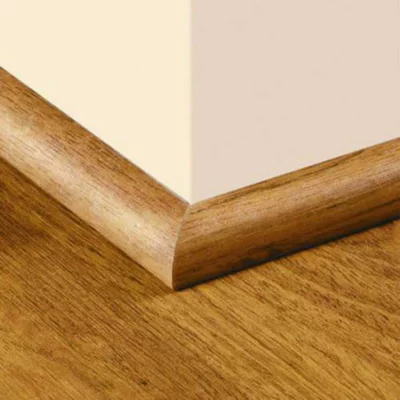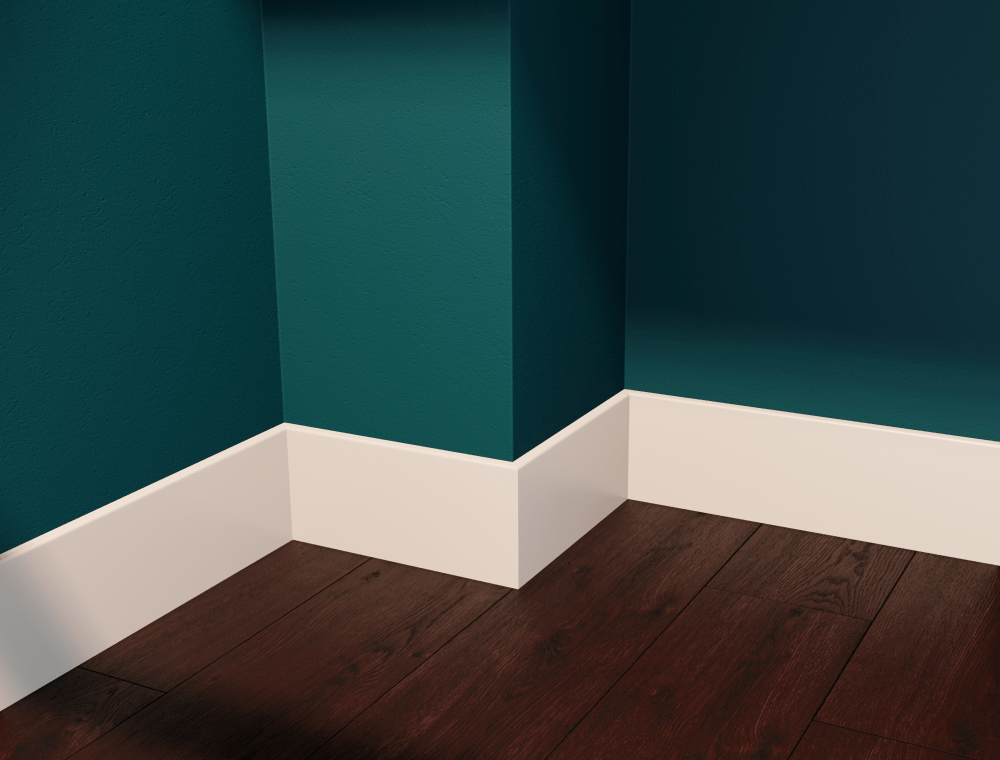Shoe moulding and quarter round have very similar styles, and their application can enhance the aesthetic and design of any residence. Many individuals perceive these two types as interchangeable. While this may appear accurate at first glance, it is not universally applicable.
Although these styles can frequently serve similar functions, they have nuanced differences in purpose and design that set them apart. If you are contemplating which option to incorporate into your home, it is crucial to understand their distinctions.
Note:
Some contents in this article may contain external links. For more information, please refer to our
Privacy Policy

Shoe Moulding vs. Quarter Round: Where Baseboard Meets the Floor
Homeowners have attractive options in shoe moulding and quarter round to add elegance and style to baseboards and frames. Shoe moulding provides more than just seamless transitions between surfaces like floors and walls; it offers additional functions. It is available in a diverse range of profiles, thus enhancing the overall design aesthetic.

Shoe Moulding
When paired and painted to match, we use a slender strip called shoe moulding or base shoe, to complement baseboards. A curved or rounded design, similar to quarter round moulding, typically distinguishes itself by being taller and featuring varied styles. Homeowners encounter numerous challenges when covering seams and hiding discrepancies between flooring and baseboards. This type of moulding addresses these challenges effectively by acting as a practical finishing touch for baseboards.

Quarter Round
Quarter round is a type of moulding commonly used alongside baseboards to conceal gaps and imperfections between the base and the floor. It serves a similar function to shoe moulding. This is uniquely shaped like a quarter of a circle, which is reflected in its name. It features a perfectly rounded edge and is available in various sizes. Its consistent width and depth, which usually match, enhance its polished and well-defined look. The sleek, curved edge provides a refined and professional finish for flooring and countertop installations.
Materials
Materials such as wood, natural stone, laminate, and concrete can be complemented by shoe moulding and quarter round. Natural solid wood or wood veneers are commonly used with them. While they can be combined with numerous materials, they are also available in different options, providing a wide range of choices. Shoe moulding and quarter round are usually made from wood, MDF, and polystyrene.
Wood
Wood stands out as a favored option for many homeowners. Its natural woodgrain offers an attractive and upscale appearance. Being entirely renewable, it is also an environmentally friendly choice. Once installed, it is resistant to cracking and warping. However, installation can be somewhat difficult, and the material may exhibit natural imperfections, leading to a less uniform look. There is a diverse selection of wood species available for shoe moulding and quarter round, such as Hemlock, Poplar, Oak, and Pine, providing a variety of textures and colors to complement or contrast different interior styles.
MDF
MDF, or medium-density fiberboard, has gained significant popularity among designers, contractors, and homeowners alike, and for good reason. Its versatility allows for a wide range of applications throughout the home, such as in baseboards and moulding. The material features a smooth surface free from natural flaws, and it usually comes pre-primed, simplifying the painting process. Additionally, MDF is resistant to splitting, which facilitates installation. For designers working within a budget, MDF stands out as an elegant and luxurious choice, being the most affordable high-quality material available.
Polystyrene
This plastic material is often utilized for moulding and baseboards. It stands out as an excellent choice due to its lightweight nature, durability, and straightforward installation process. Additionally, it offers moisture resistance, unlike many other materials that tend to swell or deteriorate with prolonged water exposure. However, the texture of this material may not be as appealing as some alternatives, potentially giving it a less upscale appearance that could influence the luxury and sophistication desired by homeowners in their selections.
How to Install Shoe Moulding and Quarter Round
To begin, select the type you wish to pair with your baseboards. After gathering all necessary tools and removing the existing moulding from the walls, proceed to cut your chosen material into pieces according to your home’s measurements. Use a tape measure to assess the entire area you plan to cover. With those dimensions in hand, start cutting your pieces to the appropriate size. Remember to account for both outside and inside corners to ensure smooth and seamless transitions.
Once all the pieces are cut and prepared, it’s time to secure them in place. If possible, utilize a nail gun for this step as it will expedite the process. Position the nails 1 to 2 feet apart along the center of the moulding to prevent any cracking or splitting, thereby enhancing the aesthetic appeal of the baseboard and the overall design of the room.
Alternate Uses for Shoe Moulding and Quarter Round
Shoe moulding and quarter rounds offer a multitude of applications beyond just baseboards. They can enhance the appearance of window edges, door frames, and staircases. For family activities, consider crafting your own picture frames and other creative projects. Additionally, these mouldings are perfect for adding unique shapes to walls, serving as a captivating and elegant interior design element.
Share This Article

